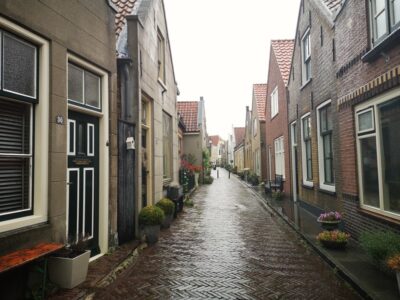The National Renewable Energy Laboratory (NREL) says it has developed a wind turbine blade made from plant-based materials that can be recycled. A three-year project is starting to yield results, and we could see the blades deployed in real-time soon.
The material is made from an inedible sugar extracted from wood, plant remains, used cooking oil, and farming waste. It’s called PECAN, or PolyEster Covalently Adaptable Network. The NREL team claims it successfully used the resin to build a 9-meter prototype blade.
PECAN would be more sustainable than current petroleum epoxy and fiberglass used to make wind turbine blades. This scientific breakthrough comes amid a wind power acceleration along the Northeast coast and in Texas.
It’s estimated the United States could have 200,000 to 370,000 tons of wind turbine waste annually by 2050. Many blades are coming to the end of their life cycle, and disposal of these blades remains a concern.
The worries over wind turbines in landfills aren’t so much of an environmental concern but more of one of space. Landfills like to bury trash in the hope it will degrade in some form, but wind turbines — which can be as long as 120 feet — are difficult to bury. Also, recycling epoxy blades is hard because the chemicals completely break down when put under heat.
Photo Courtesy Robynne Murray, NREL
The new material is designed to biodegrade in landfills but can also be melted down and remolded. The New York Times reported that the material would be placed in a “bath of methanol heated up to around 440 degrees Fahrenheit” and put back into a mold.
NREL says the PECAN produces 40% less greenhouse gas emissions than petroleum-based materials and uses 30% less energy. It doesn’t compromise on quality and has shown more structural soundness than traditional blades.
“If a wind blade hangs out in the air under its own weight for long enough, you may see it start to lose its stiffness,” Dr. Robynne Murray, an NREL researcher on the project, said in a news release. “And that could be a really big problem with other resin systems.”
“And thanks to its unique chemistry, we’ve been able to show the PECAN material performs really well on creep tests,” Murray continued.
Photo Courtesy Karsten Würth
There have been other attempts to reduce wind turbine waste. Some companies have repurposed blades into park benches and sculptures.
Some blades have even been made into a cement mix and fuel for cement production with fewer emissions. Others have been made into utility poles.
Scientific research also shows that wind power may help in decarbonizing energy generation, but the waste stream remains a problem. According to an article in the Science journal, introducing “biomass-derivable polyester covalent adaptable networks” would reduce the climate impact further.





